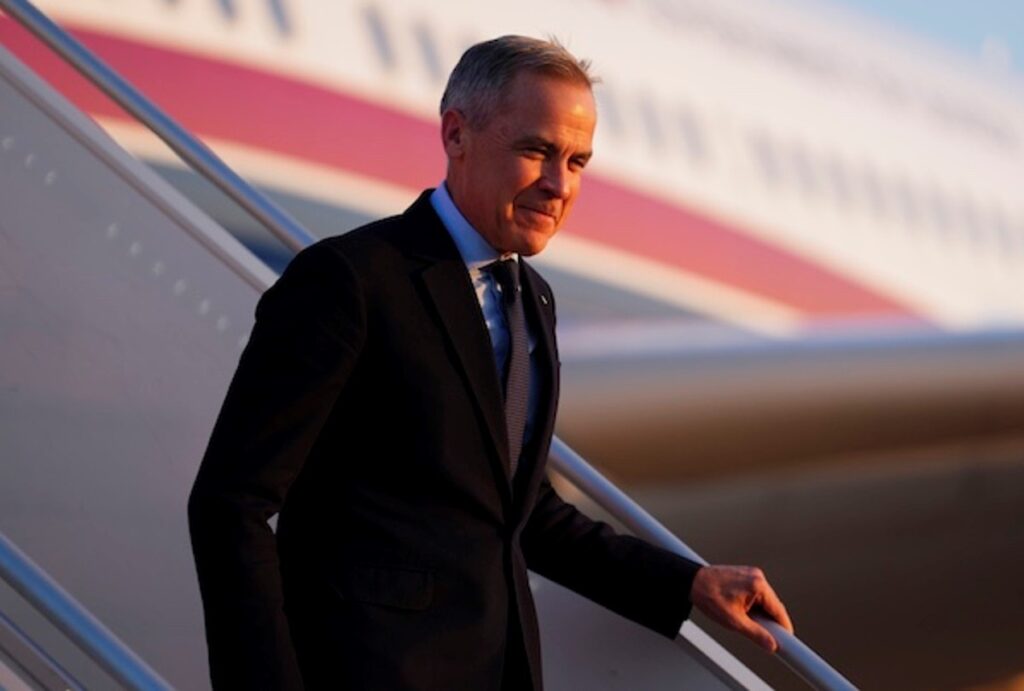
Canada’s Prime Minister Mark Carney embarks on his first official visit to Asia on Friday in an attempt to deepen trade and security ties at a time when the North American country is struggling to lessen its overwhelming dependence on the U.S. and redefine its foreign policy in pursuit of new markets.
Canadian government officials said Carney’s week-long trip might also include a meeting with Chinese President Xi Jinping, in a possible effort to reset a previously fractious relationship worsened by an ongoing trade war. Some analysts say it will be critical for Carney to explain to Asian leaders that Canada has its own agenda and is no longer as aligned with the U.S., whose President Donald Trump has repeatedly threatened to annex Canada as the 51st state.
“While the world economy is fragmenting, Carney needs to make it clear that Canada stands apart and is still interested in rules-based trade and globalization,” said Vina Nadjibulla, vice president of the Asia Pacific Foundation of Canada. Last month, Canada signed a trade deal with Indonesia, aiming to establish duty-free access for up to 95% of its goods exported there in the next year.
Trade Minister Maninder Sidhu told Reuters Canada is now targeting agreements with the Philippines, Malaysia, South Korea and Japan.
Carney will attend the Association of Southeast Asian Nations summit in Kuala Lumpur, visit Singapore for meetings and attend the Asia-Pacific Economic Cooperation summit in South Korea.
Trump also departs for Malaysia late on Friday night and will meet Xi in South Korea next Thursday, the White House said.
While Carney says he wants to diversify exports over the next decade, Canada still relies on the U.S. for about 75% of its exported goods.
Fen Hampson, a professor of international affairs at Ottawa’s Carleton University, said there were far greater business opportunities for Canada in Asia than in Europe, which Carney has visited three times since becoming prime minister in March.
“The economies in Southeast Asia are much more dynamic and compatible with Canada in terms of energy and commodities trade,” Hampson said. He noted, however, that any deals Canada pursues with China will inevitably be coloured by geopolitical dynamics between the U.S. and China. “As tensions escalate between the U.S. and China, there will be less room for Prime Minister Carney to maneuver,” Hampson said.
He suspected it would be difficult to resolve Canada’s ongoing tariff disputes with China over canola and electric vehicles, for example, without better relations between the two global superpowers.
“There’s enormous pressure on us from the Americans to not concede to their perceived rival,” Hampson said.
FORMER BANKER RAISES HOPES FOR IMPROVED RELATIONS
Most Canadians are also wary of drawing closer to China. A poll this month from Angus Reid and the Asia Pacific Foundation of Canada found 59% of people surveyed still view China negatively and only 14% think Canada should seek closer economic ties. Relations between Canada and China cratered during the premiership of Carney’s predecessor, Justin Trudeau. Canadian citizens were detained and secretly killed by the Chinese government, Canada’s security authorities concluded China interfered in at least two federal elections, and Xi publicly scolded Trudeau, alleging he leaked their discussions to the press.
Analysts say Carney’s credentials as a former central banker and international experience buy him significant credibility that his predecessor often lacked.
Carney spoke with Chinese Premier Li Qiang last month and said he expected to meet senior Chinese leadership soon to “see where the trade relationship evolves.”
Still, in a region that places tremendous importance on protocols and customs, the prime minister may need to tread carefully.
“Whatever deals there are, what will be just as important is how Carney comports himself with Xi Jinping,” said Isaac Stone Fish, CEO of Strategy Risks, a business intelligence firm specializing in China.
“Appearing to literally bow to Xi will look weak and Carney certainly knows the importance of optics.”
(Reporting by Maria Cheng; Editing by Caroline Stauffer and Marguerita Choy)
Share This:




 CDN NEWS |
CDN NEWS |  US NEWS
US NEWS 































